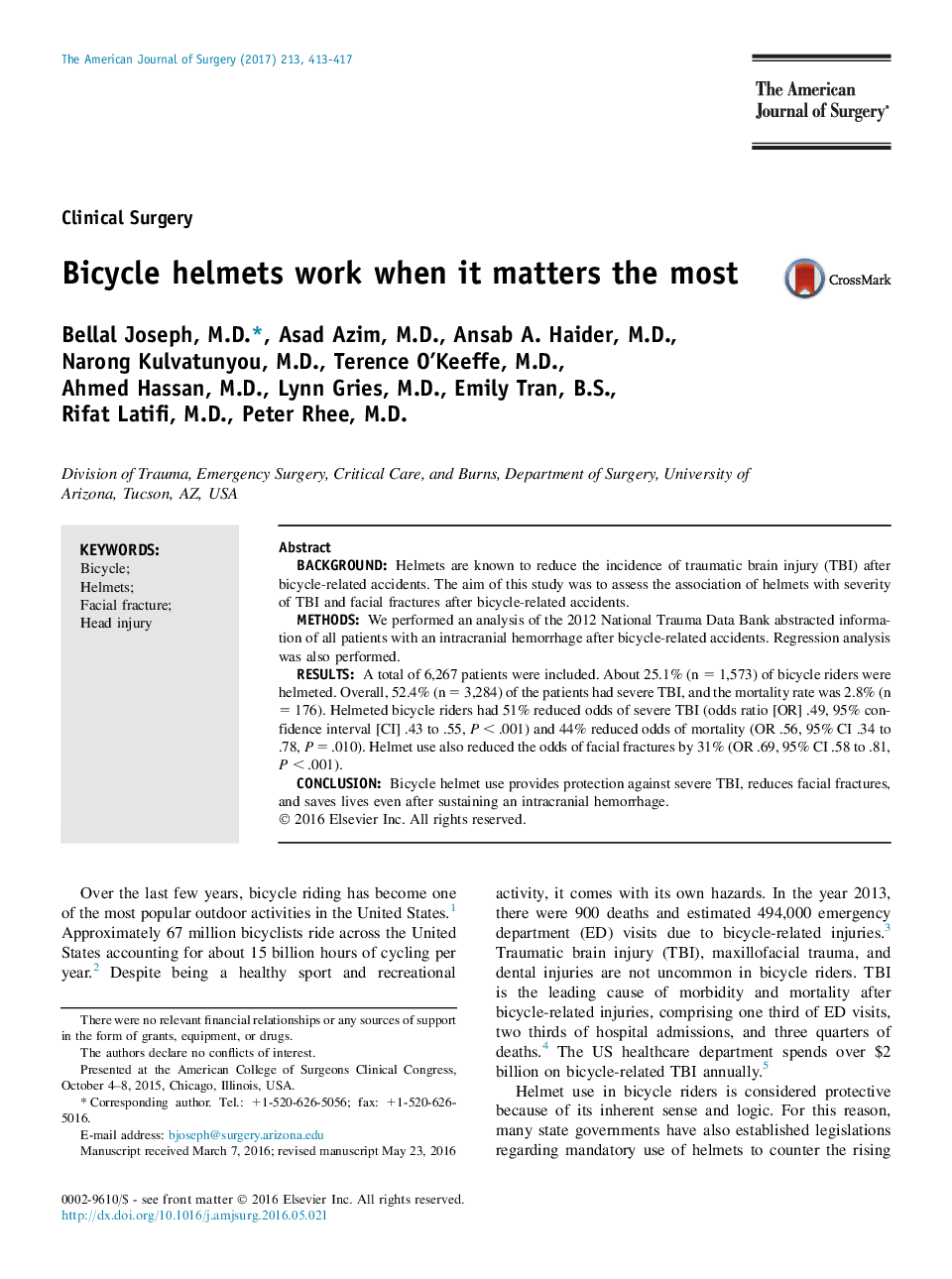| Article ID | Journal | Published Year | Pages | File Type |
|---|---|---|---|---|
| 5731146 | The American Journal of Surgery | 2017 | 5 Pages |
â¢The aim of this study was to assess the association of helmets with severity of traumatic brain injury and facial fractures after bicycle-related accidents.â¢Results of our study strongly support our hypothesis that helmet use in bicycle riders with intracranial bleed is independently associated with reduction in overall facial fractures and severity of TBI.â¢Injury prevention programs should advocate the use of helmets in bicycle riders especially in the teenage group where least compliance with bicycle helmet use was observed.
BackgroundHelmets are known to reduce the incidence of traumatic brain injury (TBI) after bicycle-related accidents. The aim of this study was to assess the association of helmets with severity of TBI and facial fractures after bicycle-related accidents.MethodsWe performed an analysis of the 2012 National Trauma Data Bank abstracted information of all patients with an intracranial hemorrhage after bicycle-related accidents. Regression analysis was also performed.ResultsA total of 6,267 patients were included. About 25.1% (n = 1,573) of bicycle riders were helmeted. Overall, 52.4% (n = 3,284) of the patients had severe TBI, and the mortality rate was 2.8% (n = 176). Helmeted bicycle riders had 51% reduced odds of severe TBI (odds ratio [OR] .49, 95% confidence interval [CI] .43 to .55, P < .001) and 44% reduced odds of mortality (OR .56, 95% CI .34 to .78, P = .010). Helmet use also reduced the odds of facial fractures by 31% (OR .69, 95% CI .58 to .81, P < .001).ConclusionBicycle helmet use provides protection against severe TBI, reduces facial fractures, and saves lives even after sustaining an intracranial hemorrhage.
